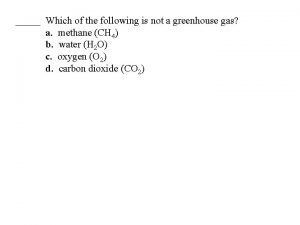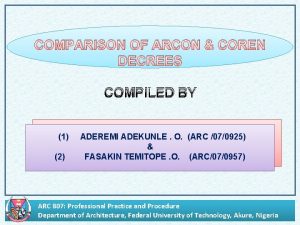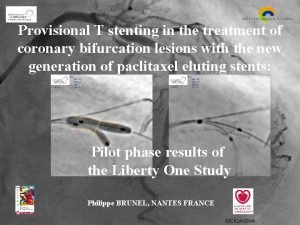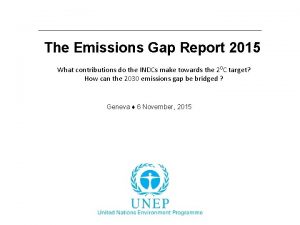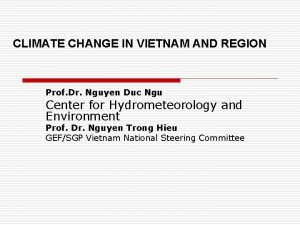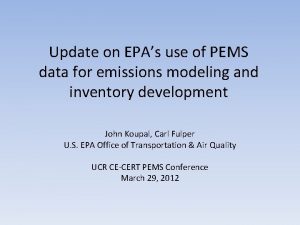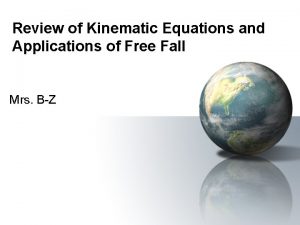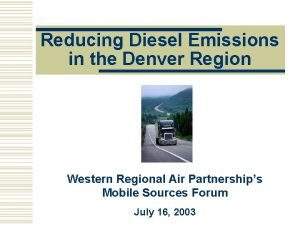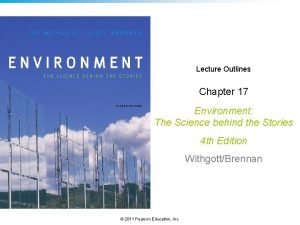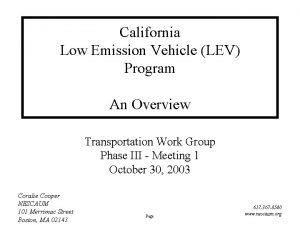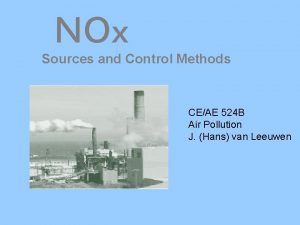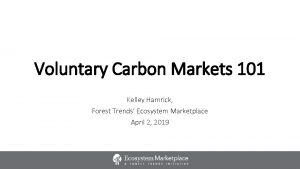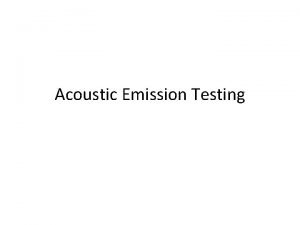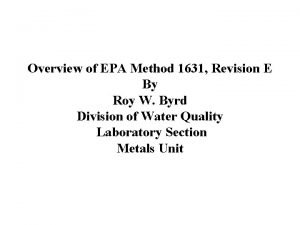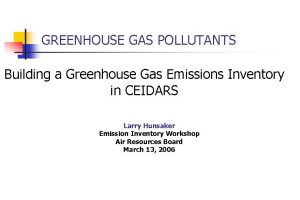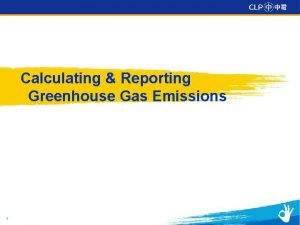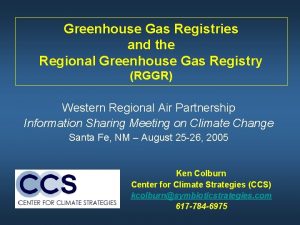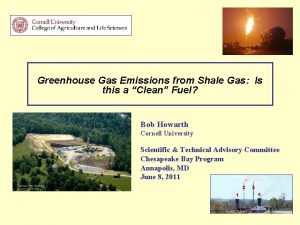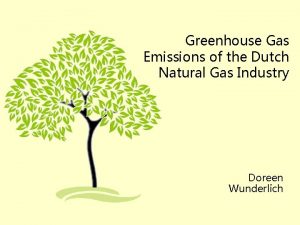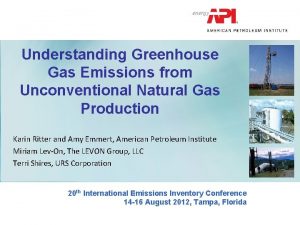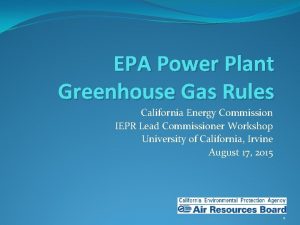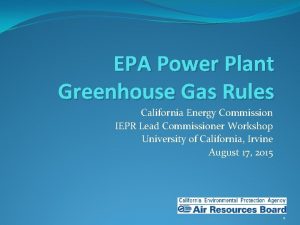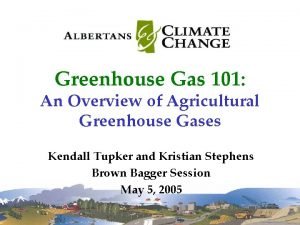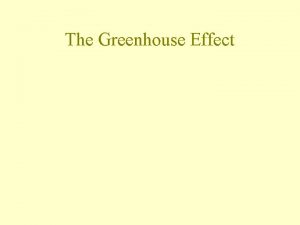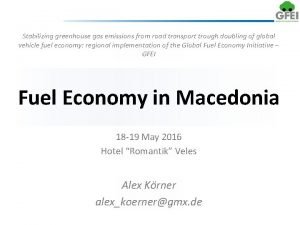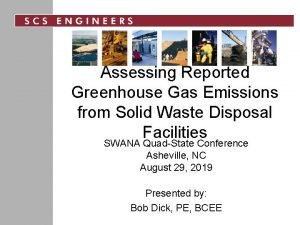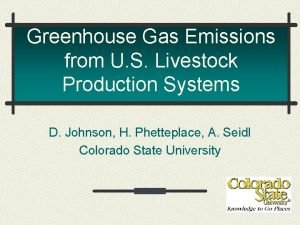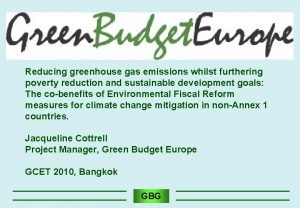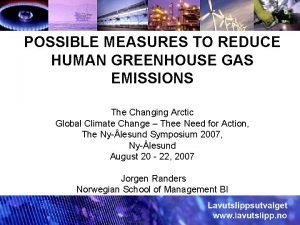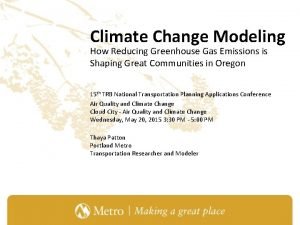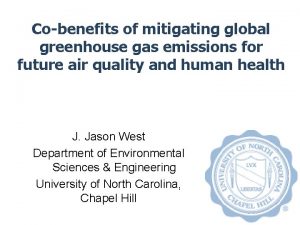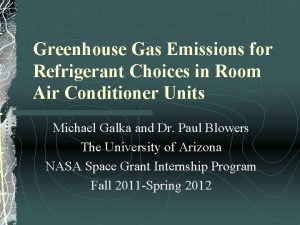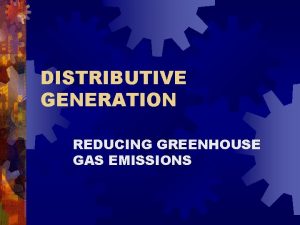Provisional greenhouse gas emissions 1990 2019 EPA Emissions
























- Slides: 24

Provisional greenhouse gas emissions 1990 -2019 EPA Emissions Statistics team, November 2020

Outline Highlights and overall Trend Compliance and future targets Sectoral Trends and Drivers

EPA Climate Science Activities Environmental Assessment & Strategic Environmental Assessment GHG Inventories & Projections Research Emissions Trading & Registry Industrial & Chemical Regulation Climate Secretariat Intergovernmental Climate Science Resource Efficiency & Behavioural Change Climate Dialogue

Welcome Reduction in overall GHG emissions. 2019 total national greenhouse gas emissions are estimated to have declined by 4. 5% on 2018 levels to 59. 90 million tonnes carbon dioxide equivalent. Less Coal means less emissions from electricity generation. Almost 70% less coal used in electricity generation in 2019 vs 2018 Less fertiliser and lime use reduces Agriculture Emissions. Reduction in emissions may be difficult to sustain given dairy cow numbers increase

Highlights § Provisional greenhouse gas emissions data for 2019 indicate that Ireland will exceed its 2019 annual limit under the EU’s Effort Sharing Decision (ESD) by 6. 98 Mt CO 2 eq. § Energy Industries emissions show a decrease of 11. 2% (1. 19 Mt CO 2 eq) in 2019, due to a 69% decrease in coal and an 8% decrease in peat used in electricity generation. § Agriculture emissions decreased by 3. 9% (0. 86 Mt CO 2 eq) in 2019, driven by reduced nitrogen fertiliser use (-10. 1%) and a 25. 4% reduction in lime used on soils. § Greenhouse gas emissions from the Residential sector decreased by 7. 3% or 0. 52 Mt CO 2 eq with coal use down 29%, peat down 7%. § Transport emissions decreased only marginally, by 0. 3% as more biofuel (+22%) was offset by increased demand (+0. 8%)

Highlights table

Annual Emissions trends

Highlights 2

Sectoral Share of GHG emissions

Agriculture

Agriculture emissions drivers

Transport

Transport emissions drivers 8

Transport (International Aviation)

Energy Industries 17. 5 Mt +54% -46% Overall emissions in 2019 are 16. 6% below 1990 levels

CO 2 Intensity of electricity generation

Residential

Residential emissions drivers

Weather and heating requirement Source: Met Éireann

Remaining Sectors • Commercial and Public services sector emissions increased by 1. 8% and 1. 2% respectively, with increases of 2. 1% in natural gas use in both sectors in 2019. • Emissions from the Manufacturing Combustion sector decreased by 2. 0% or 0. 10 Mt CO 2 eq in 2019. • Emissions from the Industrial Processes sector decreased by 1. 5% (0. 04 Mt CO 2 eq) in 2019 due to a reduction in cement production. • Emissions from the Waste sector decreased by 0. 8% in 2019 or 0. 01 Mt CO 2 eq. • F-Gas emissions were down 7. 4% from 2018 to 2019, following a decrease of 13. 8% in 2018. This is driven by a reduction in refrigeration and air conditioning emissions.

Compliance (Effort Sharing Decision)

Emissions per capita (2018 comparison)

Conclusion § Despite the decrease, Ireland is still not on the pathway required to meet future targets and a climate neutral economy. § While 2020 is likely to see a reduction in emissions caused by the impact of the pandemic, this does not negate the need for long term and sustained action. § Focusing on climate action as part of a ‘green’ recovery offers the opportunity to respond to climate change while rebuilding our economy and generating new jobs.

 Which of the following is not a greenhouse gas?
Which of the following is not a greenhouse gas? Elsevier
Elsevier Arcon provisional registration
Arcon provisional registration Inverted provisional stenting
Inverted provisional stenting Duty assessment
Duty assessment Bccnp provisional license
Bccnp provisional license Provisional coverage insurance
Provisional coverage insurance Brc program portal
Brc program portal Din status provisional
Din status provisional Un emissions gap report
Un emissions gap report Sparse matrix operator kernel emissions
Sparse matrix operator kernel emissions Ghs emissions
Ghs emissions Flame test results table
Flame test results table Pems emissions modeling
Pems emissions modeling 4 kinematic equations
4 kinematic equations Diesel emissions denver
Diesel emissions denver Particulates can be removed from smokestack emissions by
Particulates can be removed from smokestack emissions by California lev
California lev Using citys heat reduce emissions
Using citys heat reduce emissions Sources of nox emissions
Sources of nox emissions State of the voluntary carbon markets 2017
State of the voluntary carbon markets 2017 Volkswagen quiz
Volkswagen quiz Acoustic emission testing applications
Acoustic emission testing applications Parts of sperm cell
Parts of sperm cell Epa method 1631
Epa method 1631
